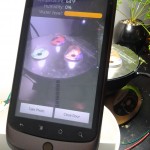Some of the people adding me on Google+ have thousands of people in their circles….
Some of the people adding me on Google+ have thousands of people in their circles. What's the point? Doesn't that make your stream unusable?
This looks awesome! Finally I don't have to stare at the tiny LED signs on the…
This looks awesome! Finally I don't have to stare at the tiny LED signs on the MUNI busses (assuming they're even functioning that day) to make sure I don't miss my stop!
Embedded Link
Official Google Blog: Google Maps 5.7 for Android introduces …
Google Maps 5.7 for Android introduces Transit Navigation (Beta) and more. 7/06/2011 09:27:00 AM. (Cross-posted on the Google Lat Long Blog and the Google Mobile Blog) Today we're releasing Google…
Embedded Link
Last.fm – the Blog · Announcing Festival Apps!
Announcing Festival Apps! Tuesday, 5 July 2011. by Michael Horan filed under Announcements Comments: 4. Music lovers have always flocked to festivals. When else would you be willing to travel to the m…
Very cool kinect hack
Very cool kinect hack
Really fun game! Wish it showed my total time at the end of the last stage, you'd…
Really fun game! Wish it showed my total time at the end of the last stage, you'd think they'd want people to compare them outside of the leaderboard.
Embedded Link
YouTube – nexuscontraptions's Channel
Build your Nexus S by bouncing, bubbling, and blasting Google apps into the phone.
Posted a more detailed overview of my garden monitor project on my blog
Posted a more detailed overview of my garden monitor project on my blog
Embedded Link
Did You Win Yet? » Android Garden Monitor
Overview. One of the coolest things announced at this year's Google I/O was the Android Open Accessory Kit, which allows Android devices to interact with accessories over USB. As an attendee, I re…
Android Garden Monitor
Overview
One of the coolest things announced at this year’s Google I/O was the Android Open Accessory Kit, which allows Android devices to interact with accessories over USB. As an attendee, I received the Arduino-based ADK DemoKit board, which I’ve used to build an app to monitor my Aerogarden.
Hardware

The garden monitor project was built with the following components:
- Arduino-based Open Accessory Kit
- Breadboard
- LM34DZ temperature sensor
- HS1101 humidity sensor
- 0.5″ force sensing resistor
- Analog servo
The force sensing resistor is mounted below the Aerogarden’s water tank to measure the weight of the water, and the servo is used to open and close the tank door.
Software

Arduino
The Arduino firmware reads the values from the temperature, humidity, and force sensors and sends them to the attached Android device over USB using the Open Accessory protocol. It also accepts commands over USB from the Android app to open and close the door.
Android
The Android app reads the sensor data from the Arduino and broadcasts them over the wifi network using xPL so they can be monitored by MisterHouse, which can alert me via email and text-to-speech when the water level is low. When the water level is below 20%, the app signals the Arduino to open the door as a visual indicator that the tank needs to be refilled. After the tank is filled, the app automatically closes the door again. The app also snaps a photo every hour, which I’ve used to create the time lapse video below.
Source
The source code for the Arduino sketch and the Android app are available on github.
Time Lapse
This video was created by combining the hourly snapshots taken by the Nexus One using ffmpeg and then edited in iMovie ’09.
Really cool light painting using multiple Roombas
Really cool light painting using multiple Roombas
Embedded Link
Roomba Light Painting of the Day – TDW Geeks
Roomba Light Painting of the Day: This light painting looks a bit like a multi-colored version of the Tron world, …














